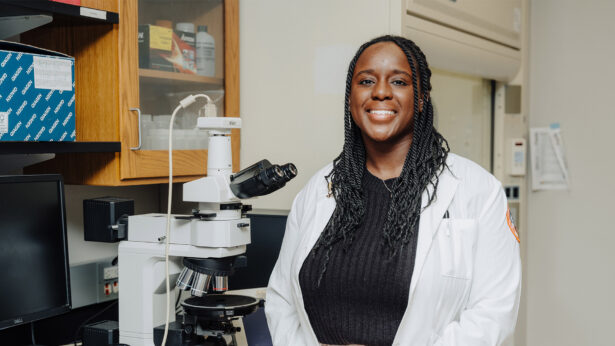Turn off U.S. Route 31 onto a driveway shaded by tall trees. Pass silos, round bales of hay and horses standing along a fence. At the top of the hill, cattle graze in the tall grass with a red barn in the distance.
It’s a scene reminiscent of a bygone era, yet a closer inspection of the 1,265 acres of rolling green pastures at the Middle Tennessee AgResearch and Education Center in Spring Hill reveals as much or more technology as its neighbors—a sprawling electric car battery plant and a new 750-unit housing development.
From time to time, a cow meanders across the field to a large metal automated feeder run by solar panels. When she gets close, her smart ear tag signals to release feed. As she eats, the device collects the gases from her breathing and belching. Methane and carbon dioxide ascend a pipe with lasers that analyze the gases. A modem atop the unit transmits the data to computers on the UT Institute of Agriculture campus in Knoxville, where researchers learn how much she eats and if she is sick or even pregnant. Another device nearby feeds the animal minerals and records her weight as she steps onto a scale built into the feeder.
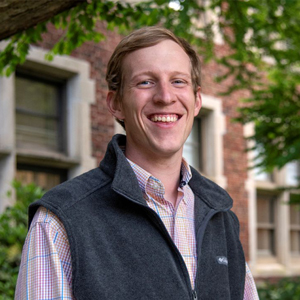
Some days, western-attired staff on horseback drive cattle to the barn, an old-school herding technique that reduces stress on the animals. Inside, cattle are guided into a chute, where they may be vaccinated or receive other treatment, and a camera at the tail end captures video of the animal’s body shape. It transmits images to the same lab, where researchers feed the information into a program that determines the animal’s body condition score, which is important data for breeding.
This working beef cattle farm provides a living laboratory and new technology test bed to make farming more efficient, cost-effective, individualized and, in a word, precise. UTIA practices precision agriculture, specifically precision livestock farming or PLF, here.
The purpose of this research boils down to a simple goal: “Feeding more people with fewer farms,” says Kevin Thompson (Knoxville ’91, ’96), director of the center. “Our natural resources are finite. We need to be proper stewards of the land and livestock.”
Between 1997 and 2017, Tennessee lost 1.1 million acres of agricultural and forestry land, and nearly 433,000 acres were lost between 2017 and 2023. By 2027, the total amount of land conversion, since 1997, is projected to be about 2 million acres, according to the UT Center of Farm Management based on U.S. Department of Agriculture CropScape data.
To meet this challenge and others in the livestock industry, more than 40 UT AgResearch faculty, UT Extension specialists and Herbert College of Agriculture graduate and undergraduate students are working in PLF to help beef, poultry and dairy producers. Construction is planned for a PLF poultry broiler facility in Spring Hill, and robotic milkers were installed in 2023 at the East Tennessee AgResearch and Education Center’s Little River Unit. Researchers are working on advances in row-crop farming with the use of sensors, drones and robotics. The College of Veterinary Medicine recently hired two precision animal health faculty, who use PLF strategies for disease detection and prevention.

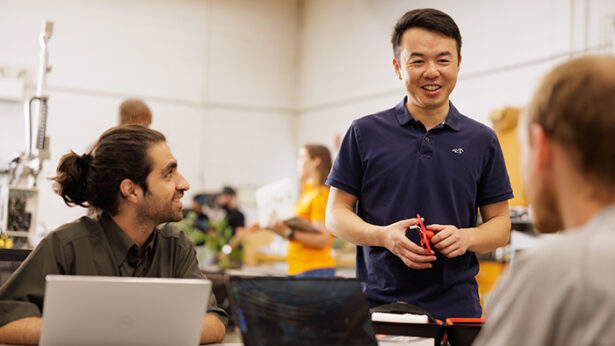
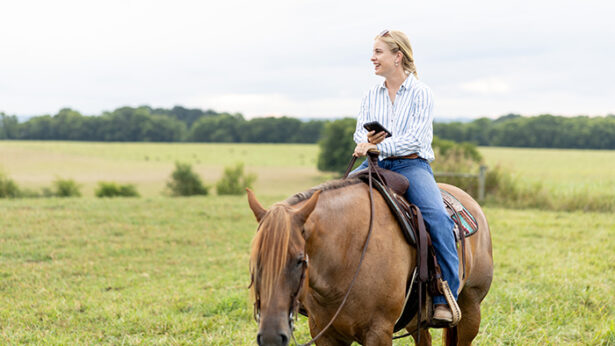
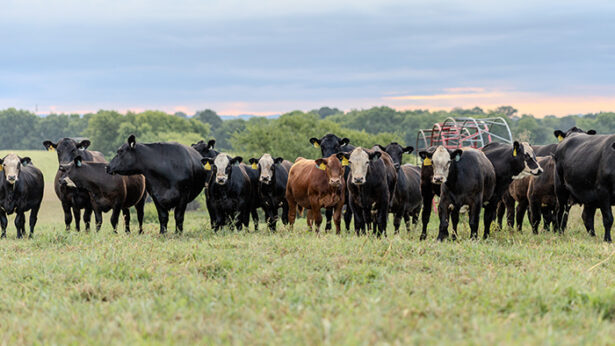
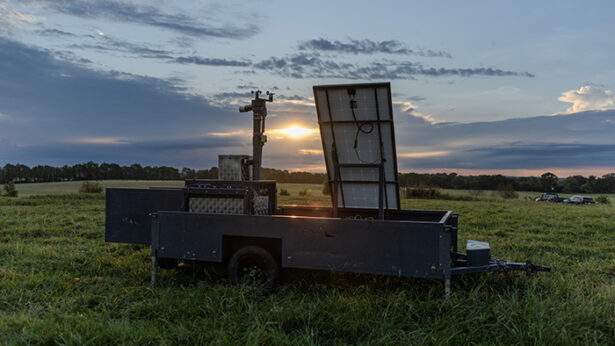
Click to Expand Images
Devices such as ear tags, scales and cameras, along with their associated technologies, save producers time, money and manpower. The devices help track individual animals instead of an entire herd or subset of a herd, eliminating human guesswork, error or subjectivity and making the data more accurate and precise. Information is gathered as the animal goes about a regular daily routine, reducing stress for the animal and producer and saving the time of not physically rounding up individuals or the herd every time information such as weight is needed. Other data, such as exactly how much grass an animal eats in the field, are difficult to measure directly but can be inferred using PLF technologies.
The confluence of agriculture and technology brings together people with different backgrounds and attracts a younger generation to modern agricultural operations. The roles of the UTIA researchers and Spring Hill staff mirror current and future roles in agriculture.
Hao Gan, assistant professor in the Department of Biosystems Engineering and Soil Science, pursued his career with an interest in electronics and robotics. His Smart Ag lab is a hub for PLF data collection and analysis. Gan and his students and colleagues feed images and data transmitted from Spring Hill into artificial intelligence models he developed. Images of cattle taken by cameras in a watering station, for instance, show up on the screens with points along the animal’s back that look like a connect-the-dot game but measure respiration and drinking amount. Gan says some of his students are interested in engineering and computer science, while others have a background in animal science and entomology.
“We need more people to manage farms, more people trained in this area to be a technician to troubleshoot or to operate a robot or software, and more people to know the technology to compete in the future,” he says.
The purpose of this research boils down to a simple goal: “Feeding more people with fewer farms. Our natural resources are finite. We need to be proper stewards of the land and livestock.”
—Kevin Thompson
Katy Smith, (Martin ’18, Knoxville ’21) education specialist and doctoral candidate in the medical and veterinary entomology lab led by professor Becky Trout Fryxell, is developing a camera system to detect pathogen-spreading ticks and biting flies on cattle. She and several student helpers spent the summer annotating photos of tick-infected animals to help train the AI model in Gan’s lab.
“Growing up on a cow-calf farm in Middle Tennessee, I’ve seen pest problems all my life,” she says. “I had not heard of entomology before, and I wanted to go into agribusiness. Now I’m bridging the two together.”
In Spring Hill, there are 11 staff members, including Thompson, who grew up on a farm in East Tennessee. Claire Hunkler (Knoxville ’22) leads the Hickman PLF Technology Unit—the official title for the PLF facilities named for UT Knoxville alumnus and former UT Board of Trustees member Waymon Hickman—and coordinates with researchers to use the technology in the field. She did not grow up on a farm but says she always wanted a career around animals and to conduct research outdoors instead of in a lab.
Wes Gilliam has worked at the center since he was 19 and manages the beef research herd. Spring Hill mimics a commercial cow-calf operation in crossbreeding Angus and Herefords to produce genetically superior females, backgrounding steers or adding weight and immunity after weaning, and developing replacement females to repopulate the herd.
“This allows for the most relevant representation of our producers,” he says.
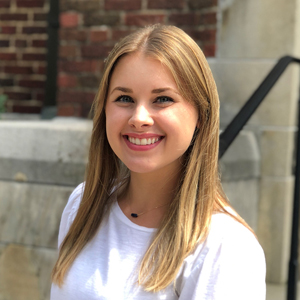
Outside of work, he manages his own farm and runs a recipient program, in which he partners with one of the Southeast’s most elite breeders, Walker Hereford Farm, and uses his cows as surrogate mothers. “I represent our state’s true producers whom we work for on a daily basis,” Gilliam says. “I stay open minded to new ideas while keeping us grounded on what our producers truly are willing to risk and want to know.”
Integration of technology on farms takes time. Researchers, through projects in Spring Hill or at one of the other nine UT AgResearch centers across the state, test devices that may be still developing and not yet affordable for the average producer, Thompson says.
Troy Rowan, assistant professor and Extension specialist in the Department of Animal Science, tests an electronic ear tag he likens to a smart watch. “Every couple of hours it sends information about the GPS location, where cows have been and where they are currently,” he says. “It shows whether they are grazing more or less than the others to inform cattle management.”
Rowan, who grew up on a beef cattle farm in Iowa and often asks his father for real-world feedback, is interested in the genetic improvement of traits such as metabolic efficiency, or how much a cow eats compared with how much weight her calf gains. With a rising human population that needs more land and food, cattle bred with superior genetics like the Spring Hill operation strives for are more important than ever.
“Improving efficiency is the best tool we have for sustainably producing our cattle on a shrinking land footprint,” Rowan says. “Efficiency keeps beef on the plate and prices at what consumers are willing to pay.”
PLF Technology at the Middle Tennessee AgResearch and Education Center
The Middle Tennessee AgResearch and Education Center (MTREC) uses Precision Livestock Farming (PLF) technology to monitor cattle for improved health, behavior and emissions. This leverages sensors and data analysis to enhance animal welfare, sustainability and efficiency in beef and forage systems. Technologies include systems for real-time data collection on animal health, water intake, feed intake and movement, with alerts for potential issues.
To learn more, visit plf.tennessee.edu.



